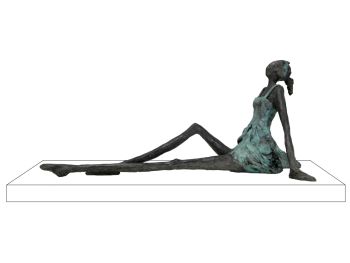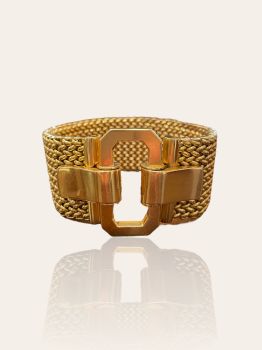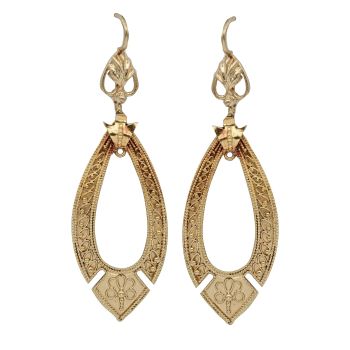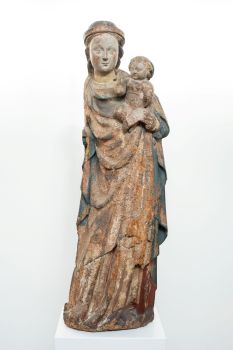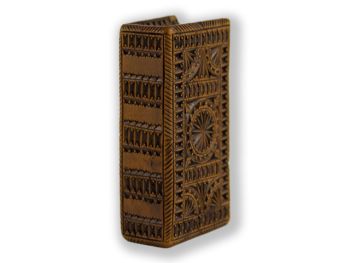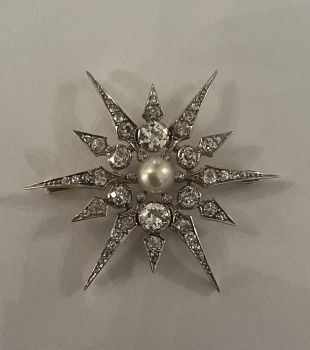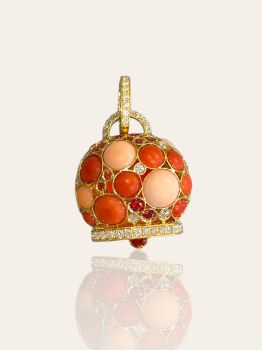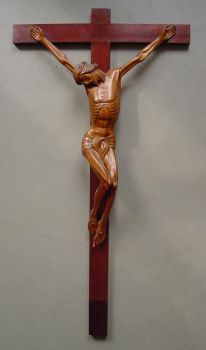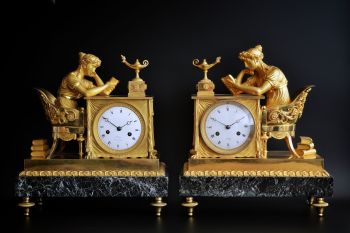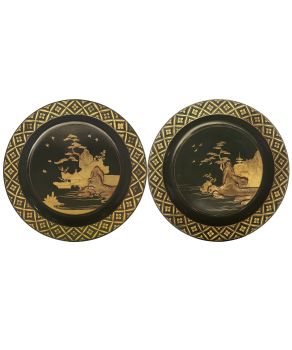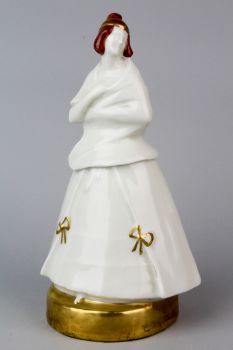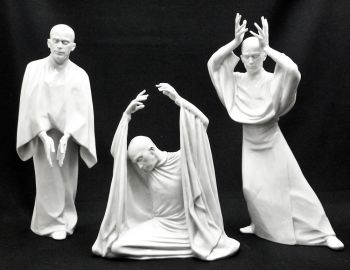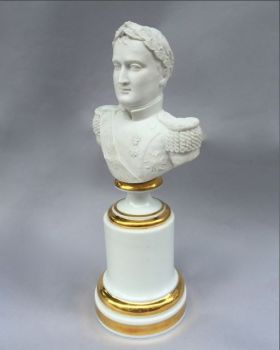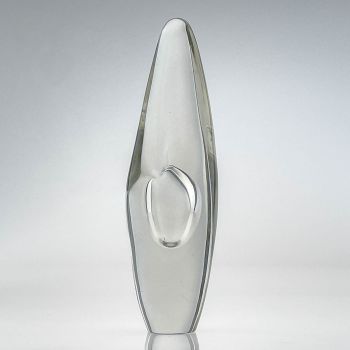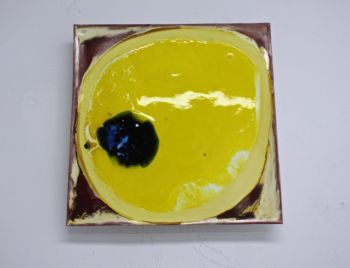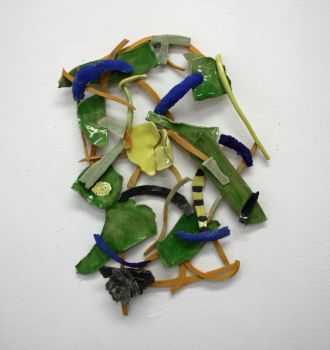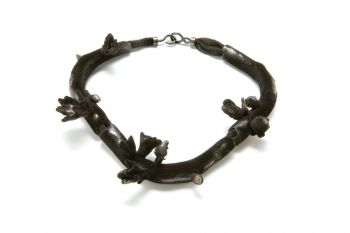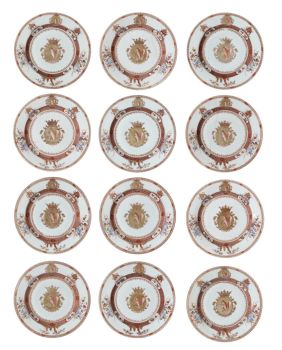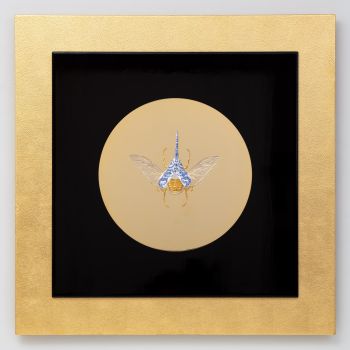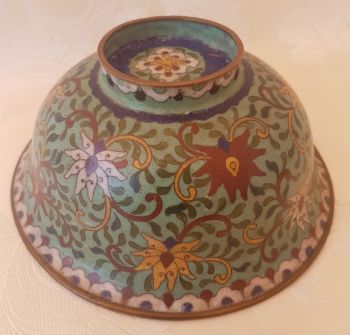Japanese porcelain blue and white ‘Van Frytom’ tea bowls and saucer dishes, Edo period, c. 1690-1710 1690 - 1710
Unknown artist
Japanese PorcelainPorcelain
3.40 cm, ø 13 cm
ConditionVery good
Price on request
Menken Works of Art
- About the artworkA set of seven ‘Van Frytom’ tea bowls and saucer dishes.
Japan, Arita, Edo period, c. 1690-1710.
The rare set consisting of three tea bowls and four saucer dishes with matching decorations in underglaze blue in the style of Dutch Delft painter Frederik van Frytom.
The bowls with spreading sides and everted rim, decorated in underglaze blue, on the outer body with a Frysian “kop-staart-rompboerderij” (translation: Head-Neck-Body farmhouse) and two figures standing next to each other in a landscape, the inner and outer rim with washed-blue bands. The well on the inside decorated with a figure standing in the grass with trees and a house. A typical stylized four-character Chenghua mark to the base.
The dishes in the form of a flower with foliated rim. Decorated in underglaze blue, similar to the bowls, with a Frysian “kop-staart-rompboerderij” and two figures standing next to each other in a landscape with grass, trees and clouds in the sky. The inner rim with a washed-blue band, the base with spur marks and a six-character Chenghua mark.
Ref:
A.Vecht, Frederik van Frytom 1632-1702, Life and work of a Delft pottery decorator, No. 40-44.
A pair of ‘Van Frytom’ style tea bowls are in the Metropolitan Museum of Art collection, accession number 2002.447.118 and accession number 2002.447.119. These are also illustrated in Japanese Art from the Gerry Collection in the Metropolitan Museum of Art, p. 116, pl. 95a,b.
For another tea bowl with this design, see: The Burghley Porcelains, An Exhibition from The Burghley House Collection, pp. 158-159, pl. 54.
A similar saucer dish is in the collection of The Burghley House, reference: CER0473
For a tea bowl and saucer dish of the same style but with a river scene, see the Twickel Castle collection, Delden, no. JK 13, illustrated in: Fine and Curious (Christiaan J.A. Jörg) pp. 244-246, pl. 317-317a.
Two similar dishes were also sold at Christie’s, 19 Dec 2014, lot 85.
Dimensions:
Bowls: Diameter 7.4 cm, height 3.4 cm.
Saucer dishes: Diameter 13 cm, height 2.5 cm.
Condition:
Very good condition, without damages.
Worldwide registered and insured shipping.
Take a look at our other listings for more Asian art and antiques.
Inv. No: MW107 - About the artist
It might happen that an artist or maker is unknown.
Some works are not to be determined by whom it is made or it is made by (a group of) craftsmen. Examples are statues from the Ancient Time, furniture, mirroirs, or signatures that are not clear or readible but as well some works are not signed at all.
As well you can find the following description:
•“Attributed to ….” In their opinion probably a work by the artist, at least in part
•“Studio of ….” or “Workshop of” In their opinion a work executed in the studio or workshop of the artist, possibly under his supervision
•“Circle of ….” In their opinion a work of the period of the artist showing his influence, closely associated with the artist but not necessarily his pupil
•“Style of ….” or “Follower of ….” In their opinion a work executed in the artist’s style but not necessarily by a pupil; may be contemporary or nearly contemporary
•“Manner of ….” In their opinion a work in the style of the artist but of a later date
•“After ….” In their opinion a copy (of any date) of a work of the artist
•“Signed…”, “Dated….” or “Inscribed” In their opinion the work has been signed/dated/inscribed by the artist. The addition of a question mark indicates an element of doubt
•"With signature ….”, “With date ….”, “With inscription….” or “Bears signature/date/inscription” in their opinion the signature/ date/ inscription has been added by someone other than the artist
Are you interested in buying this artwork?
Artwork details
Related artworks
Unknown artist
Japanese art deco lacquervase with Scarab beetle motif1920 - 1950
Price on requestDille Art
Unknown artist
Set Franse Empire Pendules / Empire Lectura penduleearly 19th
Price on requestKuipers Kunst & Antiek
1 - 4 / 12Unknown artist
A MARINE IVORY NETSUKE OF A DUTCHMAN HOLDING A CHINESE FAN18th century
Price on requestZebregs & Röell - Fine Art - Antiques
Unknown artist
A IVORY NETSUKE OF A DUTCHMAN HOLDING A COCKEREL18th century
Price on requestZebregs & Röell - Fine Art - Antiques
Unknown artist
AN IVORY NETSUKE OF A DUTCHMAN FROLICKING WITH A SMALL BOY18th century
Price on requestZebregs & Röell - Fine Art - Antiques
Unknown artist
A JAPANESE SMALL SAWASA 'PEACH-FORM' CRUCIBLE CUPearly 18th
Price on requestZebregs & Röell - Fine Art - Antiques
Unknown artist
A SMALL IVORY NETSUKE OF A DUTCHMAN WITH A DRUM1750 - 1800
Price on requestZebregs & Röell - Fine Art - Antiques
Unknown artist
A RARE LARGE JAPANESE LACQUERED LEATHER TELESCOPE1750 - 1800
Price on requestZebregs & Röell - Fine Art - Antiques
Unknown artist
The Stamford Raffles Secretaires.1800 - 1813
Price on requestZebregs & Röell - Fine Art - Antiques
Unknown artist
A rare Japanese export lacquer medical instrument box1650 - 1700
Price on requestZebregs & Röell - Fine Art - Antiques
1 - 4 / 21- 1 - 4 / 24
Unknown artist
A large Japanese Imari porcelain 'VOC Groningen' dish1800 - 1925
Price on requestZebregs & Röell - Fine Art - Antiques
Samuel Dejong
Anatomia Blue Heritage, Hercules Open2017 - 2019
Price on requestVilla del Arte Galleries
 Curated by
Curated byGallerease Magazine
1 - 4 / 24Unknown artist
Chinese gilt bronze censer, Xuande mark, 18th century, Qing dynasty18th century
Price on requestMenken Works of Art
Unknown artist
A white jade ‘Lotus Seedpod and Bug’ carving, Qing dynasty, 18th century18th century
Price on requestMenken Works of Art
1 - 4 / 10











